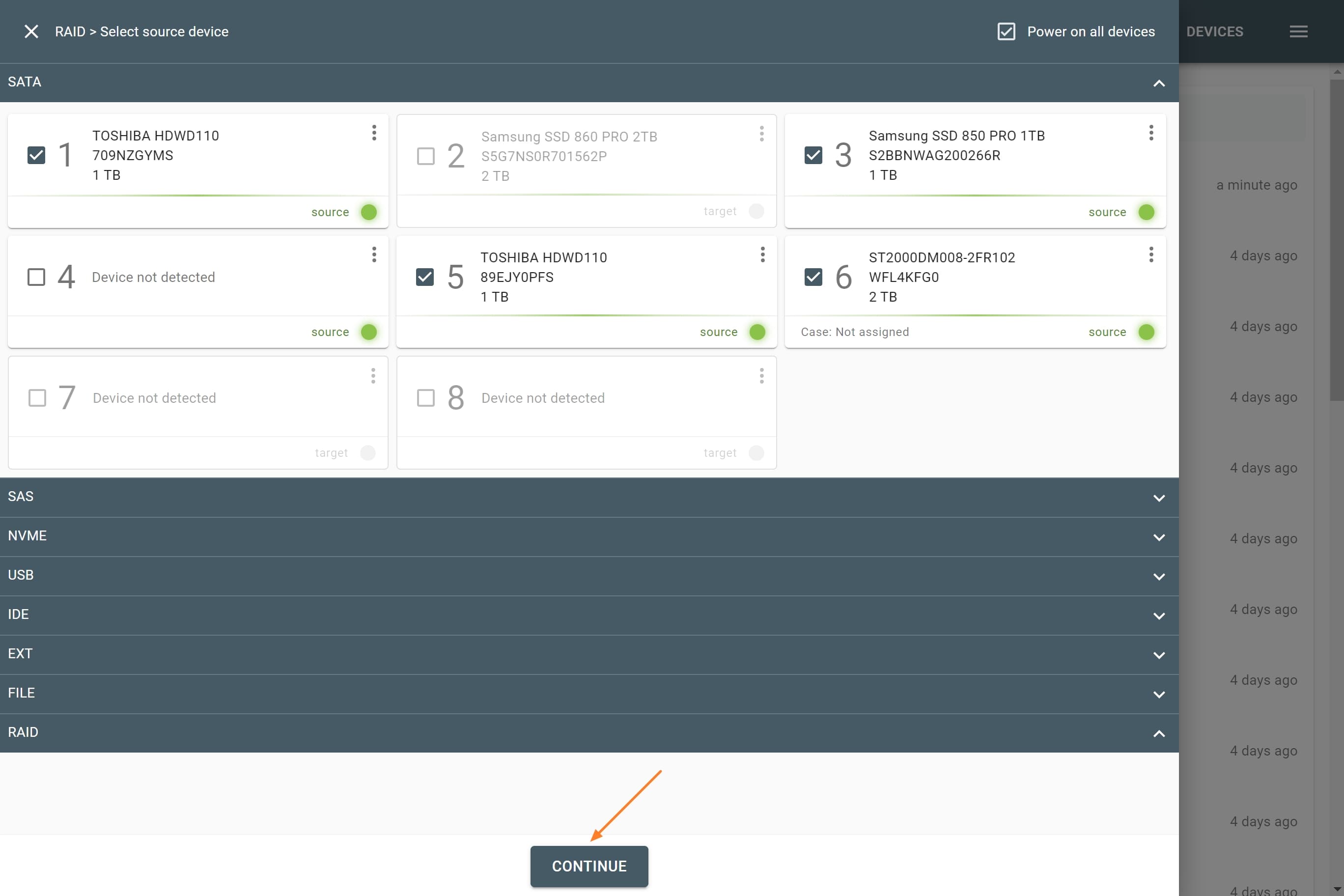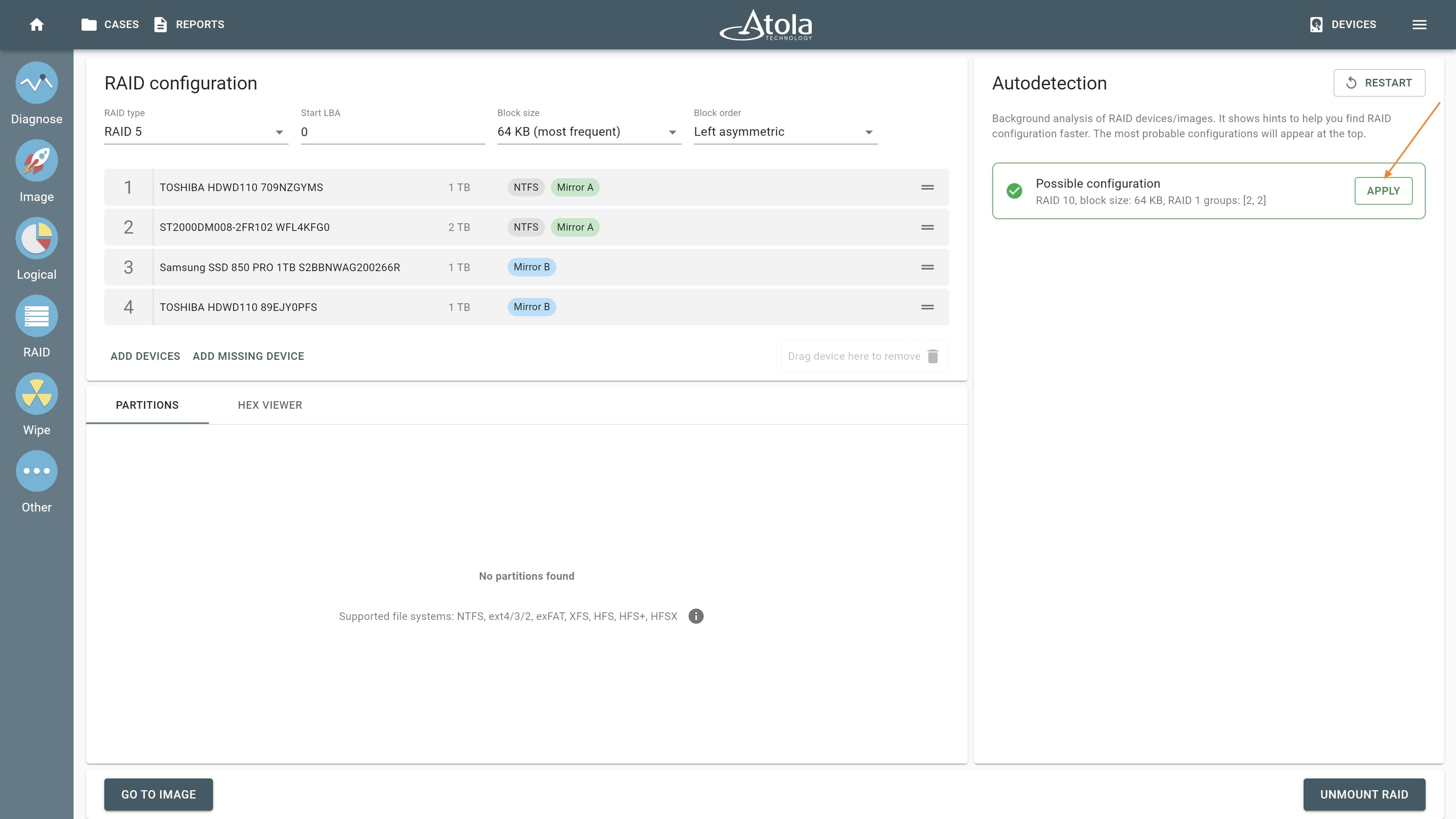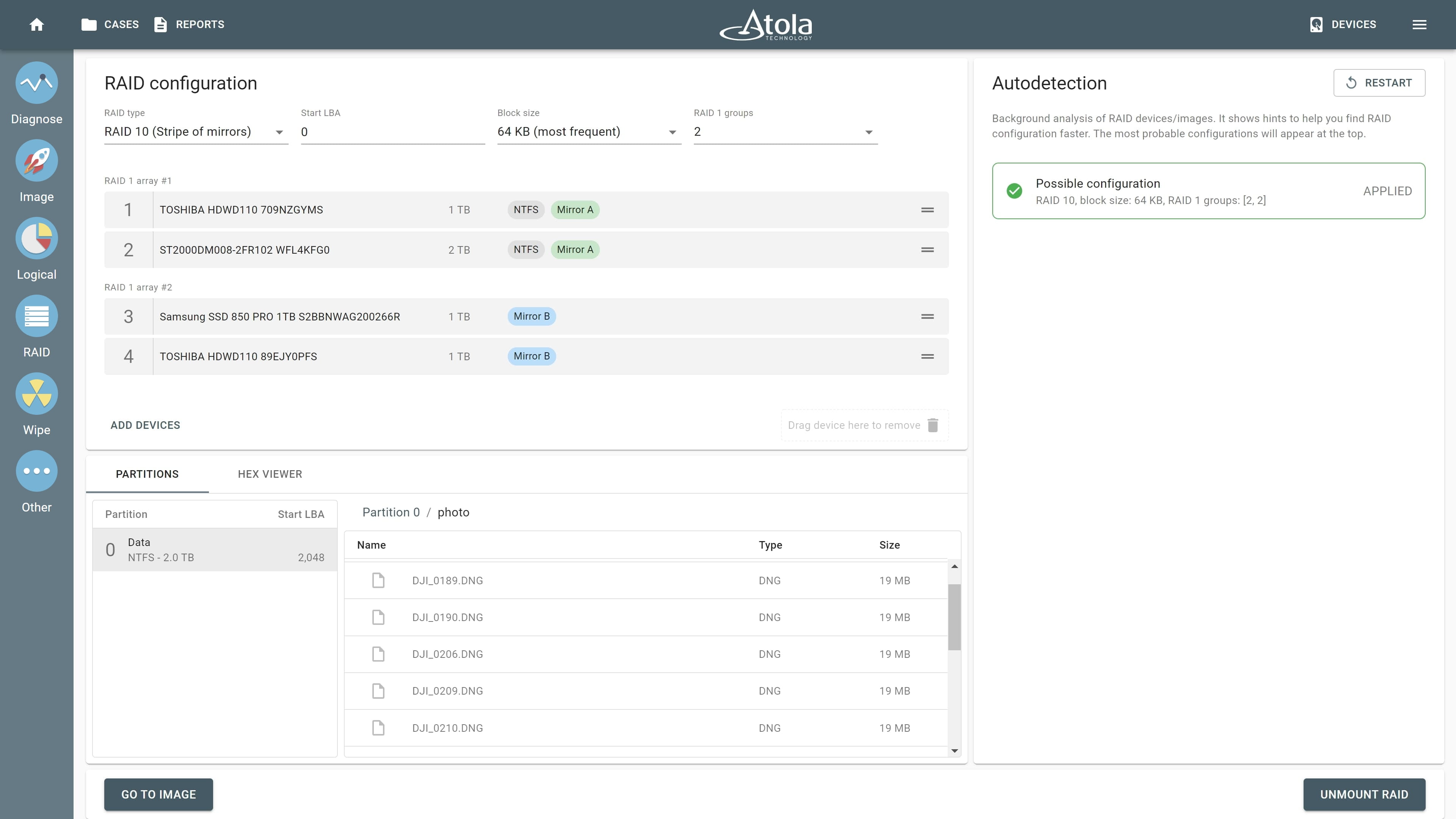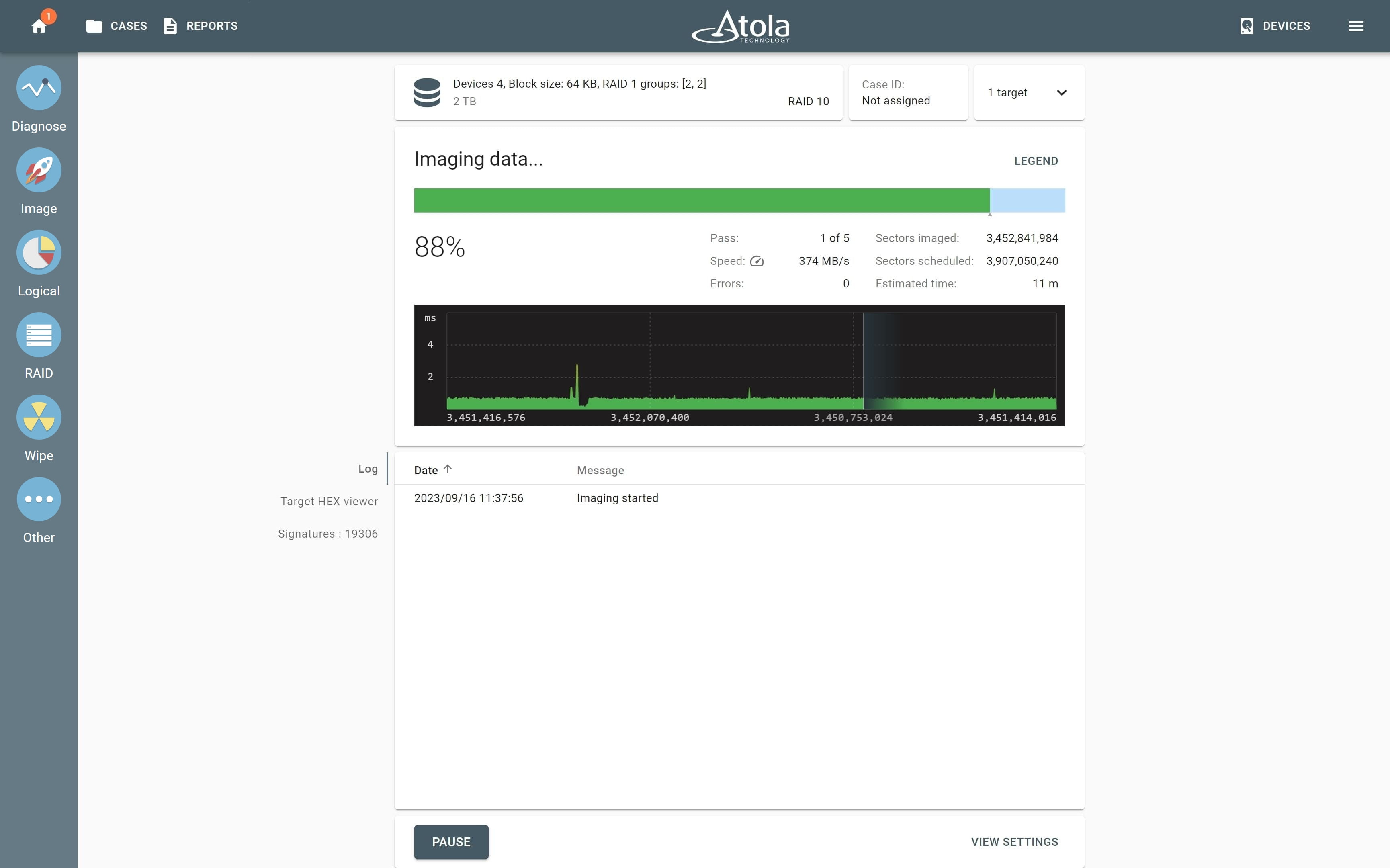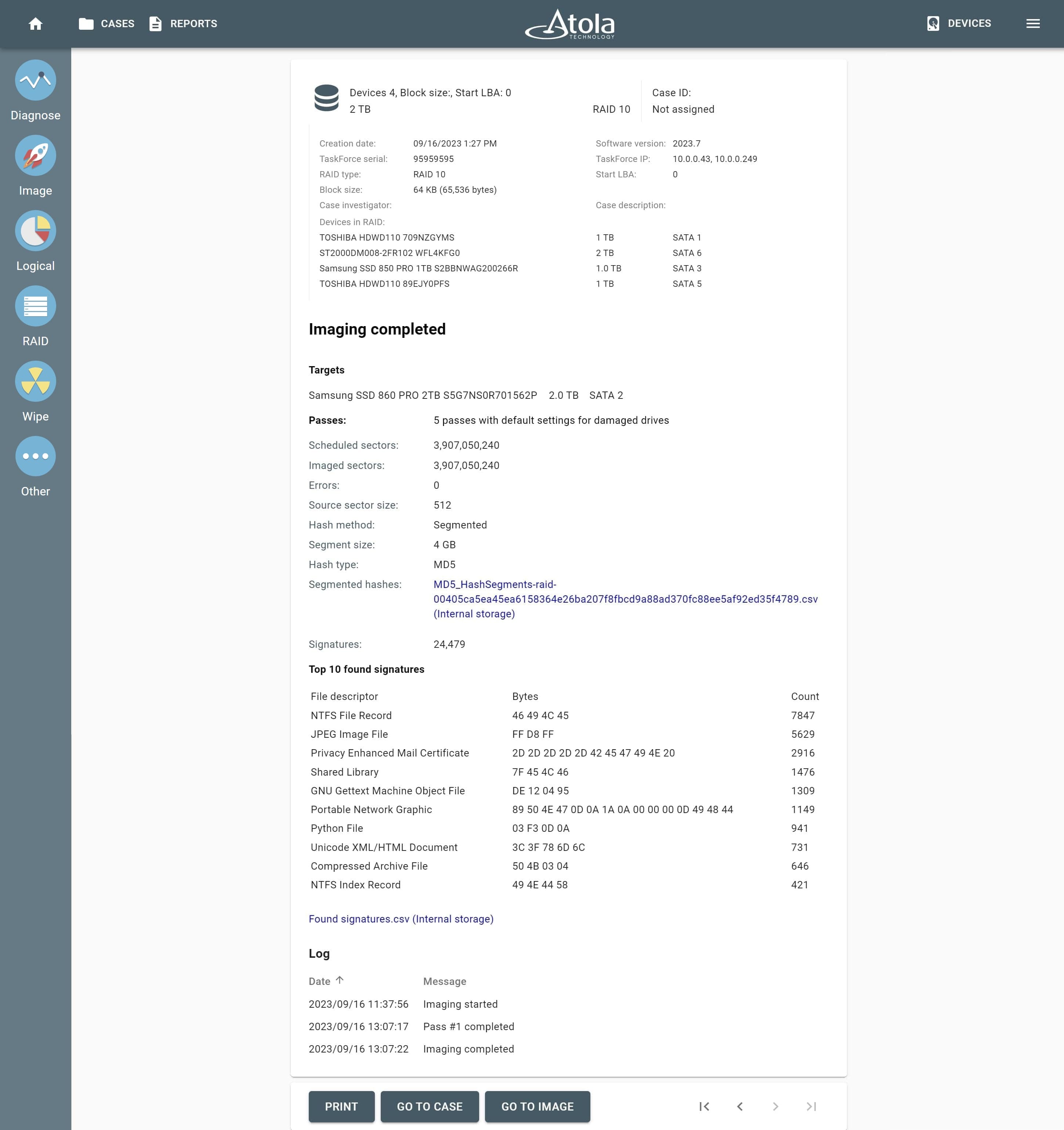RAID 10: reassembly and imaging
RAID 10 arrays combine mirroring and striping techniques. This helps these arrays have higher performance and better resiliency against data loss or corruption. TaskForce 2 uses both of these advantages: it images data faster from a RAID 10 compared to other RAID types and rebuilds the image using the data redundancy in case of disk failure.
TaskForce's configuration autodetection module will help identifying the type and other parameters of a RAID 10, should there be a lack of information about the given RAID and its configuration.
To mount an unknown RAID 10 and image it:
- On the left in the TaskForce main window, click RAID.
- Select the drives that make up the RAID array and click Continue.
- When the autodetection module (in the right part of the screen) comes up with a suggestion of RAID configuration, click Apply.
In rare cases, there can be more than one suggestion. Try them out one by one by clicking Apply next to each suggestion.
If you know the type and parameters of the RAID, you can enter them manually in the drop-downs.
If you know the type and parameters of the RAID, you can enter them manually in the drop-downs.
- TaskForce 2 arranges the drives into respective groups and applies other RAID settings to mount the partitions, which you can browse through in the Partition preview below.
- Click the Go to image button and select the target.
- Check the settings. Please note that you can choose to image only part of the data (only one of the partitions).
- The automatically generated Imaging report contains the details of the RAID and its members, the target, hashes, signatures found as well as the timestamps.
